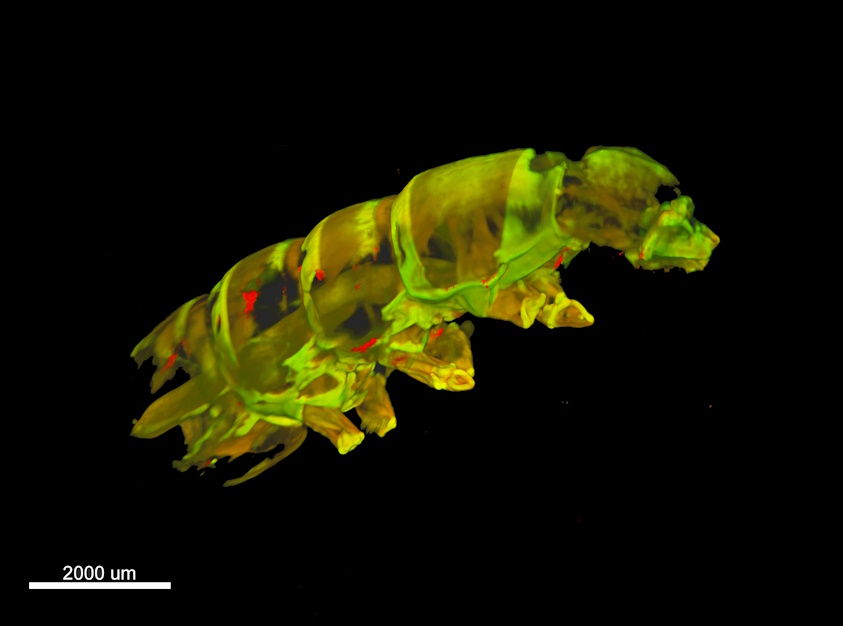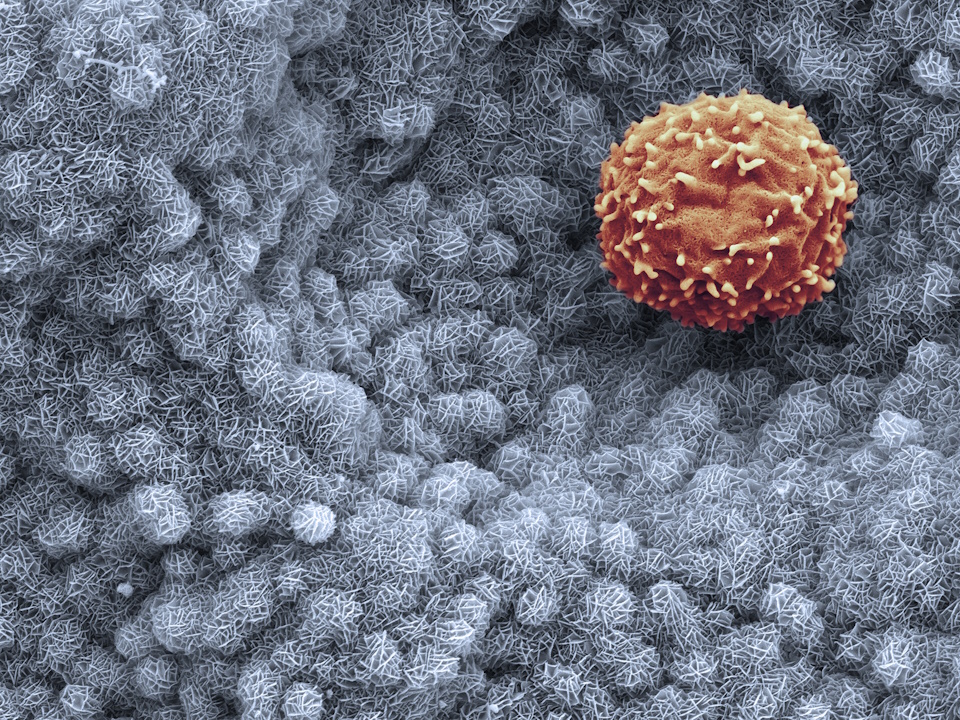Biological imaging ranges from the visualization of ions, molecules, cells and tissues to whole small animal models, and is one of the most used and demanded technologies in life science related research, teaching and industrial applications. The BF-BioImaging platform supports, maintains, and develops a powerful portfolio of various state-of-the-art equipment and expertise in a wide range of light and electron microscopy services, including light microscopy modalities for both fixed samples and live cell and tissue imaging, ranging from super-resolution to light sheet and mesoscopic imaging, and from label-free imaging to high-content microscopy. Electron microscopy offerings cover standard and cryo-genic specimen preparation for transmission and scanning electron microscopy, three-dimensional imaging at wide length scales and various hybrid techniques with light microscopy.
The platform comprises over 50 full-time RI personnel in 12 imaging units organized into 5 nodes in Helsinki, Turku, Oulu, Tampere, and Kuopio. The platform serves a large user base of >1400 users, has contributed to several patents, start-ups, and company collaborations, and supports other BF technology platforms by providing various microscopy-based readouts and analysis tools.
BF-BioImaging platform services include:
- Open access to all facilities
- Personal user support and general support activities: e.g., consultation on experimental set up; sample preparation; choice of instruments and imaging methods; image analysis; user training & guidance
- Maintenance and development of imaging systems, methods and analytics
- Teaching activities: lecture and practical courses for MSc & graduate students & postdoctoral fellows
- Imaging data management
- Support in image analysis and development of image analysis tools
- International activities
Nodes
UEF: University of Eastern Finland; UH: University of Helsinki; UO: University of Oulu; UTU: University of Turku; TAU: Tampere University; ÅAU: Åbo Akademi University
Contact details
Platform Chair
Eija Jokitalo
eija.jokitalo@helsinki.fi
Platform Vice Chair
Pasi Kankaanpää
pkanka@utu.fi
Services
Helsinki BioImaging (HBI)
Biomedicum Helsinki Imaging Unit (BIU) provides access to advanced widefield, confocal and super-resolution light microscopy as well as a wide selection of image post-processing and analysis tools. Specialized highlights include multichannel total internal reflection microscopy and multiphoton label-free modalities, such as coherent anti-Stokes Raman scattering microscopy.
BI Light Microscopy Unit (LMU-BI) provides access, training and consultation on wide-field, high-content, confocal, super-resolution, fluorescence lifetime and light sheet microscopy. All methods are available for both live and fixed samples. Data storage and cell culture facilities, as well as image analysis are also provided.
FIMM High Content Imaging and Analysis (FIMM-HCA) provides access and service in (confocal) high-content (HC) imaging, including automation with high throughput plate handler and cell incubator. Specific technology includes computer assisted laser microdissection for phenotypic isolation of single cells for further omics analytics. Expertise in HC image processing and advanced analysis is offered.
BI Electron Microscopy Unit (EMBI) provides wide range of sample preparation and access to transmission and scanning electron microscopy and image analysis tools. The unit specializes in advanced volumeEM workflows comprising serial block face imaging SEM (3View) and focused ion beam SEM, correlative light-electron microscopy and methods for image segmentation and analysis.
Turku BioImaging (TBI)
Turku BioImaging Operations Team (TBI-OT) provides open access to advanced image analysis and data management services, including OMERO servers and deep learning solutions. TBI-OT also coordinates imaging services and activities in Turku, and the national coordination between BF- BioImaging, Euro-BioImaging Finland and Euro-BioImaging ERIC.
The Cell Imaging and Cytometry core facility (TBI-CIC) hosts several widefield and confocal instruments and more specialized techniques, enabling imaging from sub-cellular compartments to digital pathology with whole-slide scanners. Specialized highlights include multiple super-resolution methods, light-sheet, and multiphoton imaging.
The Laboratory of Electron Microscopy (TBI-EM) provides standard sample preparation and access to transmission electron microscopy and offers advanced techniques such as immuno electron microscopy, electron tomography and correlative light-electron microscopy.Oulu BioImaging (OBI)
Light Microscopy Core Facility (OBI-LM) provides state-of-the-art point scanning confocal microscopy for multi-position, 3D and time-lapse imaging with freely selectable excitation and emission wavelengths for most of the available fluorophores. OBI-LM also provides fast lifetime contrast (FLIM) imaging, real-time adaptive deconvolution, and advanced live cell imaging (spinning disk confocal with TIRF and FRAP units). Available technologies especially for microscopically large fixed and living samples (e.g., whole mount tissue samples, organotypic cultures) are light sheet microscopy and optical projection tomography (OPT), fluorescence stereomicroscopy with optical sectioning, and multiphoton microscopy (MP) with lifetime and spectral imaging options. MP also allows label free imaging of e.g., collagen fibers (SHG) and structure interfaces (THG). Different optical clearing methods for opaque tissue samples are offered as a service. Dedicated intravital imaging laboratory provides imaging of anesthetized mice with MP equipped with dual output infrared laser (tunable and fixed beams) and with a resonant scanner suitable for imaging rapidly occurring cellular events and for fast imaging of large volumes. Intravital imaging laboratory is also equipped with surgical and anesthesia devices and physiological sensors.
Electron Microscopy Core Facility (OBI-EM) provides sample preparation and access for transmission and scanning electron microscopes, specializes on mouse phenotyping, immuno electron microscopy, and offers advanced 3D Serial imaging on SEM (Array tomography) and correlative light-electron microscopy techniques.
Tampere BioImaging (TAUBI)
BMT imaging facility focuses on imaging of mesoscopic samples: tissues, small model organisms (e.g., zebrafish), biomaterials, light responsive materials, and advanced cell cultures. The facility consists of a variety of imaging systems, including several widefield fluorescence microscopes, four confocal microscopes and super-resolution structured illumination microscopy system.
Eastern Finland BioImaging (EFBI)
Electron microscopy core facility (SIB Labs) provides sample preparation and access for transmission and scanning electron microscopies, elemental analysis and specializes in multimodal imaging combining EM and spectroscopy.
BCK cell and tissue imaging unit houses confocal microscopes for high- and super-resolution imaging and molecular dynamics, high-throughput imaging platform especially for long time-lapse imaging and advanced image analysis, an advanced widefield fluorescence microscope with slide scanning stage and computational clearing capabilities for image enhancing. A widefield fluorescence microscope equipped with a microinjection device and relief contrast technology is also available. Moreover, the infrastructure also comprises a histology laboratory equipped with modern devices and services for sample processing.Recent user publications
Ershov et al. TrackMate 7: integrating state-of-the-art segmentation algorithms into tracking pipelines (2022) Nature Methods 19:829- ; PMID: 35654950; DOI: 10.1038/s41592-022-01507-1
Devarajan et al. Targeting collagen XVIII improves the efficiency of ErbB inhibitors in breast cancer models (2023) Journal of Clinical Investigation 133:e159181; PMID: 37498672; DOI: 10.1172/JCI159181
Kyykallio et al. A quick pipeline for the isolation of 3D cell culture-derived extracellular vesicles (2022) Journal of Extracellular Vesicles 11:e12273; PMID: 36257915; DOI: 10.1002/jev2.12273
Danielsson et al. Nuclear lamina strain states revealed by intermolecular force biosensor (2023) Nature Communications 14: 3867- ; PMID: 37391402; DOI: 10.1038/s41467-023-39563-6

Kirstin Vonderstein, Light sheet microscopy, Caterpillar.

Ilkka Miinalainen: Waiting for differentiation.


